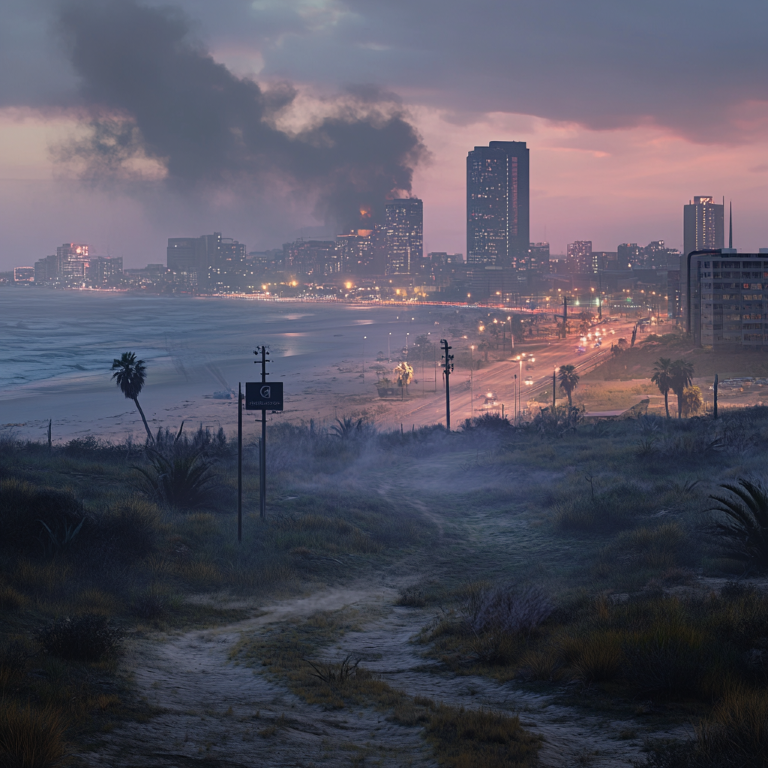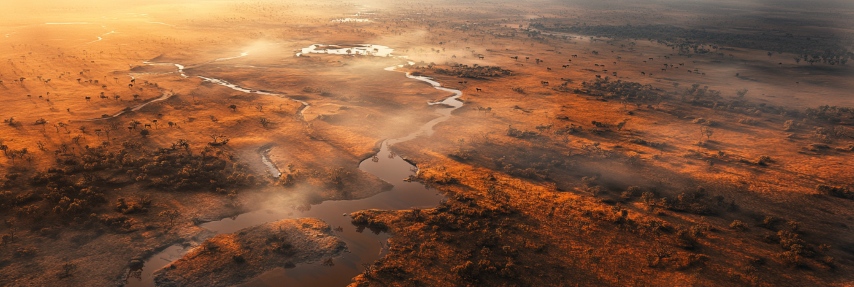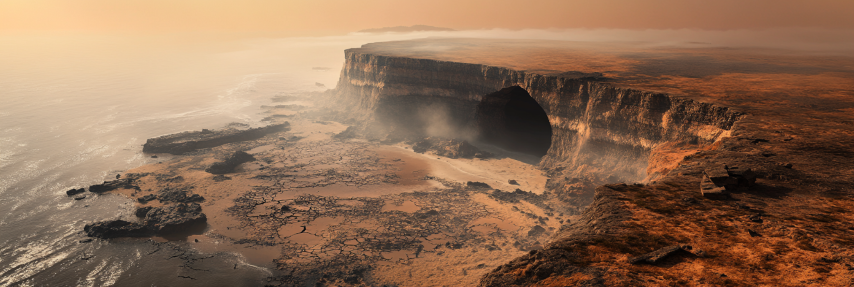NATIONAL NEWS - In response to the growing urgency of climate change and its uneven impact across South Africa, Auto & General has released powerful imagery to visualise what the country could look like by the year 2100 if global warming continues unchecked.
Drawing on predictive data from the Intergovernmental Panel on Climate Change (IPCC) and striking AI-generated visuals, the initiative highlights the distinct vulnerabilities facing each region - from inland provinces battling rising heat and water scarcity, to coastal areas at risk of rising sea levels and increasingly severe storms.
While these futuristic visuals may appear like scenes from a science fiction movie, the threat is very real. Recent disasters like the raging wildfires in Los Angeles and the catastrophic KwaZulu-Natal floods of 2022 serve as stark reminders that climate change is already reshaping our world - and South Africa is no exception.
This year's heavy rainfall and flooding across much of South Africa serve as a timely reminder of the escalating frequency and intensity of extreme weather events, a trend linked to climate change.
Scientific consensus, supported by the IPCC, indicates a clear trend towards more frequent and intense extreme weather, while studies, such as those by the World Weather Attribution group, have already linked human-induced climate change to a doubling in the likelihood of extreme rainfall events.
Offering a tangible glimpse into Mzansi’s potential future, Auto & General has used cutting-edge AI image generation tool, Midjourney, to visualise predicted climate change damage to iconic natural landmarks and urban environments, relevant to their geographical location for the year 2100.
 Cape Town Table Mountain
Cape Town Table Mountain
The imagery encompasses:
- Western Cape’s Table Mountain and Cape Point: Scenarios illustrating prolonged droughts and rising temperatures
- Eastern Cape’s Hole in the Wall, Tsitsikamma National Park and Gqeberha: Coastal erosion and drought affecting water-scarce regions and agricultural lands
- Northern Cape’s Augrabies Falls and Kgalagadi Transfrontier Park: Desertification and the impact of reduced water flow
- Free State’s Golden Gate Highlands National Park: Drought-stricken agricultural landscapes and dwindling water resources
- KwaZulu-Natal’s Drakensberg Mountains, iSimangaliso Wetland Park, Durban and its Golden Mile: Severe flooding due to heavy rainfall, coastal erosion from rising sea levels and tropical cyclones
- Gauteng’s Magaliesberg Mountains and Johannesburg: Potential impacts of intensifying urban heat island effects and increased risk of flash flooding
- Mpumalanga and Limpopo’s Kruger National Park: Rising temperatures cause heatwaves and droughts threatening water security and agriculture
- North West’s Pilanesberg National Park and Madikwe Game Reserve: Arid conditions affecting mining operations and natural reserves
These powerful visuals aim to raise awareness and underscore the urgent need for preparedness.
 Eastern Cape Gqeberha
Eastern Cape Gqeberha
Obakeng Moloisane, Executive Head: Distribution at Auto & General explains: "The impacts of climate change are not uniform across South Africa. While inland provinces like Gauteng, Free State, and North West grapple with intensifying heatwaves, water scarcity, and flash floods; coastal regions face threats from rising sea levels and more severe storms.
"These gradual shifts in our climate, if ignored, can trigger a cascade of irreversible damage to our environment, infrastructure, and livelihoods. It is crucial for homeowners to understand these risks and take proactive steps."
 Kruger National Park
Kruger National Park
Moloisane offers the following advice for homeowners:
- Understand Your Regional Risks: Identify the primary climate change threats specific to your province, such as heatwaves and water scarcity in Gauteng, droughts in the Free State, or flooding in KwaZulu-Natal. Consider factors like proximity to flood plains, susceptibility to hail, and potential for water scarcity.
- Implement Location-Specific Protections: Adapt your home protection measures to regional climate risks by improving drainage in flood-prone areas, reinforcing roofs against hail, and implementing water-wise landscaping. In drought-affected regions, consider installing rainwater harvesting systems to enhance resilience.
- Review Insurance Coverage Based on Regional Threats: Ensure your home insurance adequately covers climate-related risks specific to your region, such as flooding, storm damage, or drought. Understand your policy’s terms and discuss potential gaps with your insurer to stay protected.
- Consult Your Insurer: Engage with Auto & General's experts to review your coverage and ensure it provides the necessary protection against the increasing and varied climate change impacts in your region. Proactive consultation is key to ensuring claims certainty, no matter where you reside.
"Auto & General recognizes that climate change presents distinct challenges for different regions of South Africa," continues Moloisane. “Our campaign is designed to empower homeowners with the knowledge to take proactive steps to protect their properties and secure the right insurance coverage. We are committed to supporting our customers across all provinces, ensuring they are insured for their unique climate risks. In these increasingly challenging times, we strive to provide peace of mind and claims certainty, urging South Africans to engage with our resources and speak to our advisors for the right protection.”
 Eastern Cape Hole in the Wall. Images: https://www.autogen.co.za/home-insurance/
Eastern Cape Hole in the Wall. Images: https://www.autogen.co.za/home-insurance/
‘We bring you the latest Garden Route, Hessequa, Karoo news’
















